Gem Certification & Assurance Lab (GCAL), established by Donald Palmeiri in 2001, offers a broad array of services related to gems and jewelry. They are recognized for their work in grading and certifying natural and lab-grown diamonds, assessing diamond cuts, identifying colored stones and pearls, analyzing precious metals, and capturing high-quality images and videos of gems. Their office is based in New York and proudly holds an ISO 17025 certification, a significant accomplishment.
In this guide, we’re primarily focusing on the diamond evaluation services offered by GCAL, particularly their system for grading diamond cuts. While the majority of gem labs adhere to the GIA model for grading diamond clarity and color, approaches to cut grading are not standardized. GCAL recently introduced its 8X cut grade, which is considered to be a significant advancement in diamond evaluation.
Need your diamond certified? Discover the intricate process of diamond evaluation by GCAL, including their unique 8X™ cut grade system at Whiteflash.
GCAL’s Cut Grading System
In GCAL’s opinion, the ‘Excellent’ cut grade given by GIA to over 50% of round diamonds often fails to reflect existing cutting flaws or light performance deficits. GCAL’s 8X™ cut grade is far more selective, awarded to merely 1% of diamonds that GIA considers ‘Excellent’.
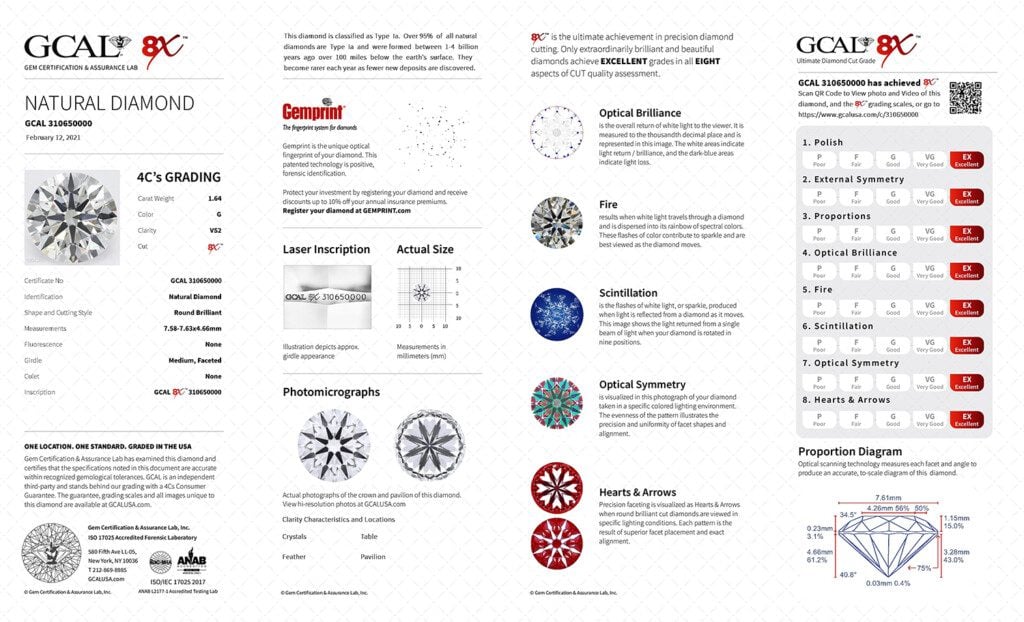
GCAL’s grading system takes into account the following aspects of diamond cut quality:
- Polish
- External Symmetry
- Proportions
- Optical Brilliance
- Fire
- Scintillation
- Optical Symmetry
- Hearts and Arrows
Ensure your gem's authenticity and value with GCAL's comprehensive grading services. Explore their process, from polish and symmetry to optical brilliance.
Polish and Symmetry
These are physical attributes that almost every diamond lab grades. Polish refers to the smoothness of the facets, while symmetry assesses alignment of adjacent facets.
Proportions
A crucial aspect of cut quality, proportions evaluate the diamond’s ability to fully reflect and refract light. GCAL considers the following ranges ideal:
- Table %: 54.0% – 58.0%
- Depth %: 59.8% – 62.2%
- Crown Angle: 34.0 0 – 35.00
- Pavilion Angle: 40.6 0 – 41.00
- Lower Girdle Facet Length: 75% – 80%
- Star Length: 45% – 55%
- Girdle Thickness: THIN TO SLIGHTLY THICK, faceted
- Culet Size: NONE – VERY SMALL
From the physical attributes to the light performance, understand every aspect of GCAL's diamond grading process.
Optical Brilliance, Fire, and Scintillation (Light Performance)
GCAL defines “optical brilliance” as the total return of white light to the observer, while “fire” results from white light dispersing into spectral colors. Scintillation is the sparkle effect when the diamond is in motion, relying on contrast to make facets blink on and off alternately.
Optical Symmetry and Hearts and Arrows
These factors demonstrate the craftsmanship in diamond faceting, and GCAL uniquely separates these two attributes, which are usually combined by other labs.
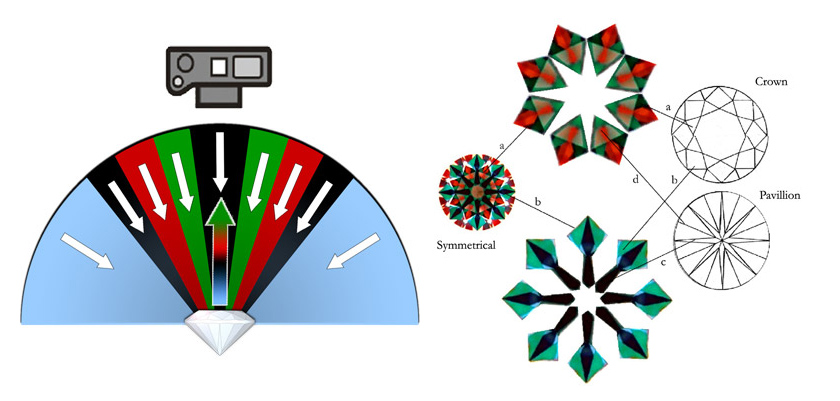
Looking for a detailed guide to diamond certification? Dive into GCAL's intricate grading system and find out what makes its process unique.
Cut Grading of Fancy Shapes
Beyond the round brilliant, GCAL also offers cut grading for oval and princess cut diamonds, substituting Shape Aesthetics for optical symmetry and hearts and arrows.
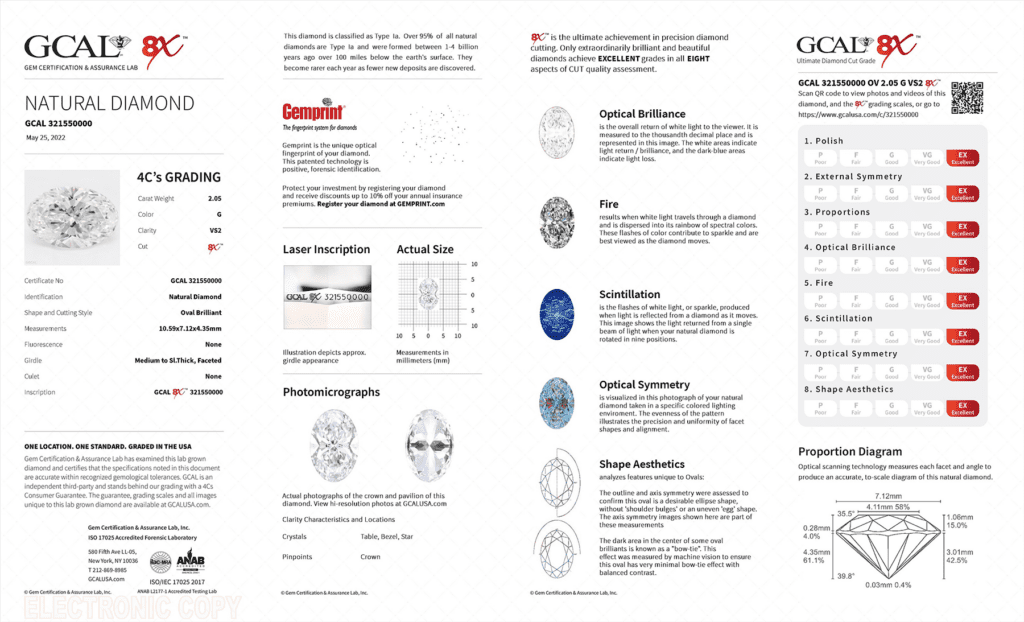
Photomicrograph
GCAL’s diamond report includes a magnified photo or “photomicrograph” of the diamond, illustrating any internal features that may be present.
Laser Inscription
Most GCAL diamond certificates feature a laser inscription of the lab report number, and for lab-grown diamonds, the letters LG are added in front of the number, and LAB GROWN is inscribed on the girdle.
Gemprint
GCAL’s unique service, Gemprint®, uses laser technology to map the reflection patterns within a diamond, creating a unique identifier akin to a fingerprint. This can be used to confirm identification or compare against a database for matching.
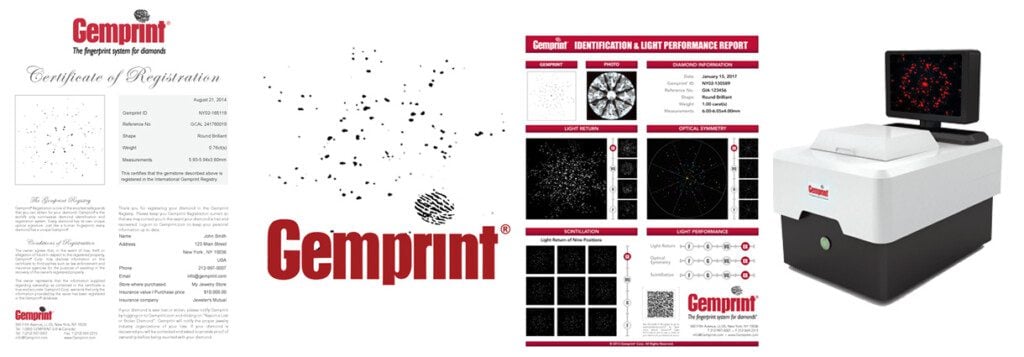
Lab-Grown Diamond Reports
GCAL provides identification and grading for lab-grown diamonds, offering full grading reports that include light performance and hearts and arrows, as well as condensed versions like an “Express” report.
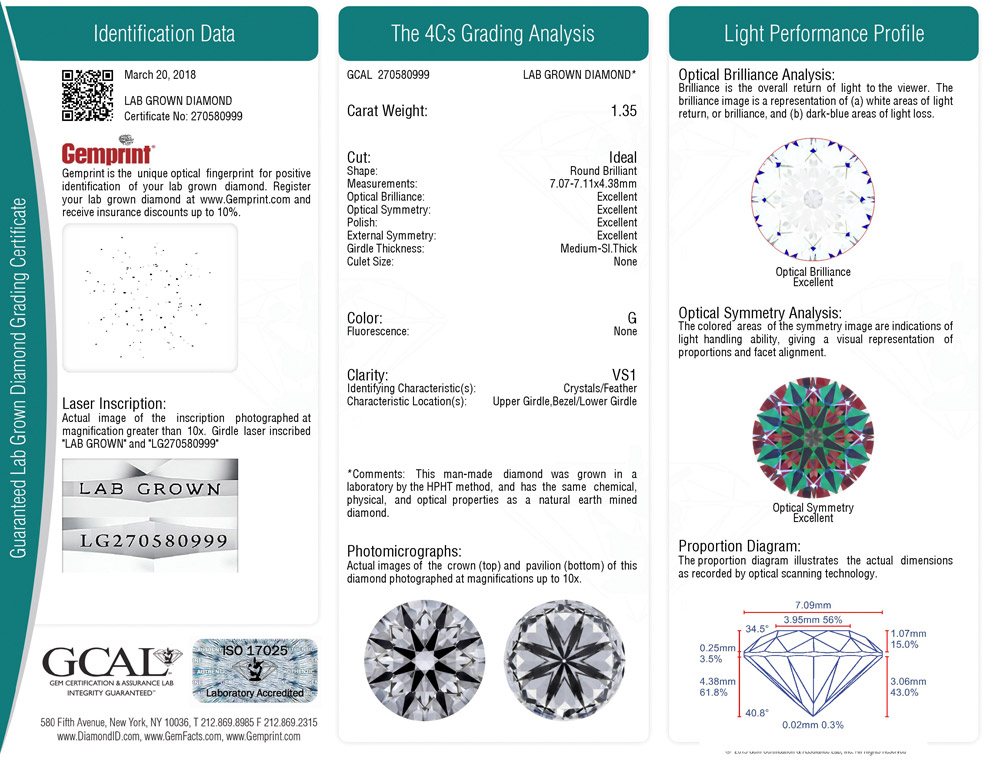
Gemstone and Pearl Reports
GCAL offers full grading reports on gemstones and pearls, including a UV behavior graph, a photo of the gem, and a description of its cut quality for gemstones, and a description of surface quality and luster for pearls.
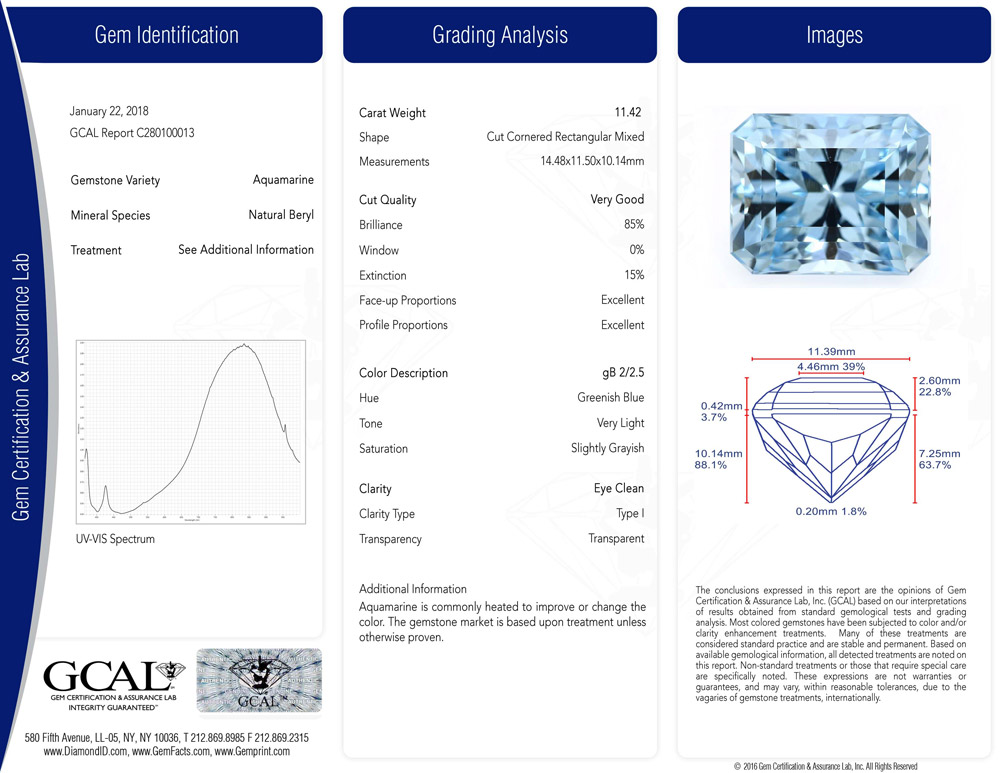
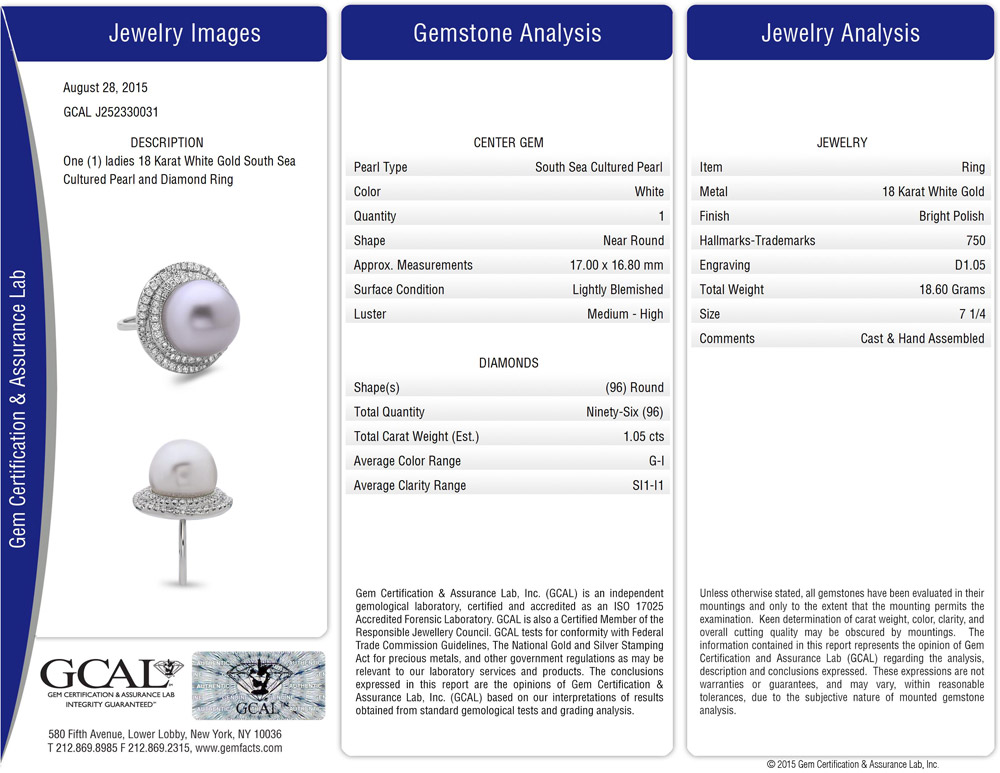
GCAL Jewelry Appraisals
Drawing on data from the Jewelry Market Monitor, GCAL offers appraisals on finished jewelry pieces, which can be tailored to fit various client needs, such as Retail Replacement value, Fair Market Value, or Marketable Cash Value.
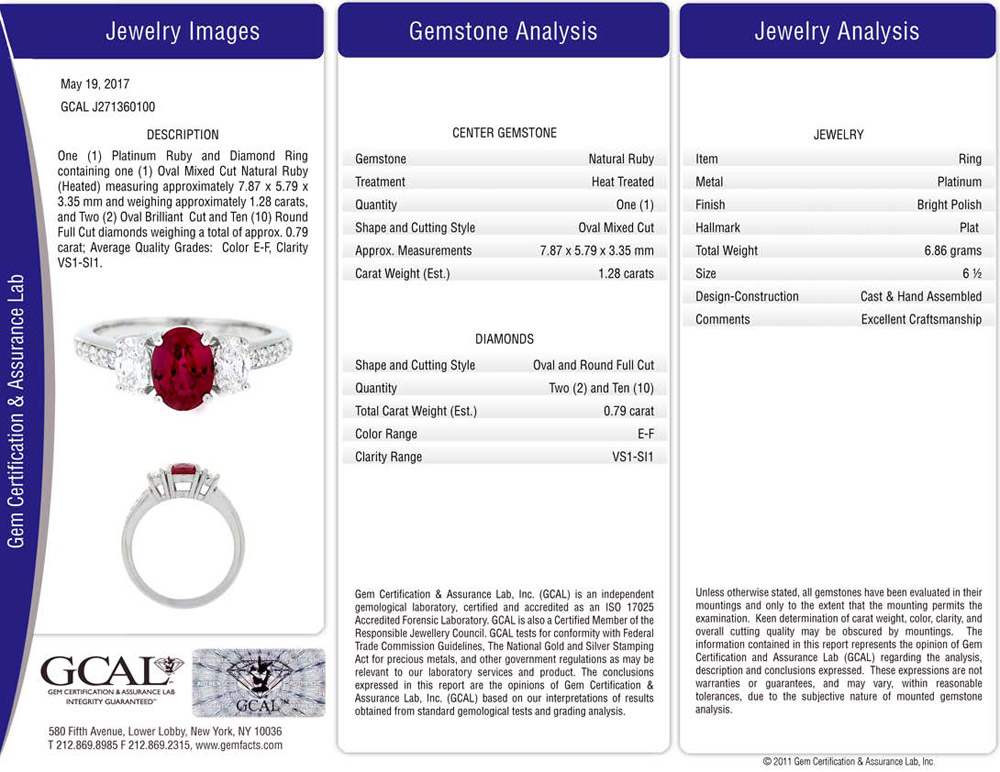
Guarantee of GCAL Certificates vs Reports
GCAL highlights their guarantee of grading reports, setting them apart from the grading reports issued by AGS and GIA. However, they don’t specify what their ‘cash back’ claims cover, so it’s recommended to discuss these details with GCAL directly.
Other GCAL Services and Specialties
Thanks to Donald Palmeiri’s expertise, GCAL also offers consultancy and expert witness services for court cases related to insurance and law enforcement, inventory audits, risk assessment, and guidance on damage and restoration.
Wondering about the credibility of your diamond certificate? Understand GCAL's guaranteed grading reports and what sets them apart in the industry.
Conclusion
Located in New York’s Diamond District, GCAL is a highly regarded gemological lab known for its vast technical knowledge and wide range of services. Their recent push towards comprehensive cut grading highlights their ongoing effort to lead the industry. They cater primarily to professionals in the diamond and jewelry trade, hence individuals wanting to use their services will need to approach via a member of the jewelry trade.
